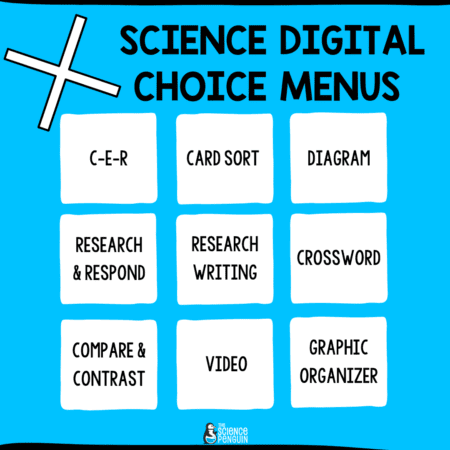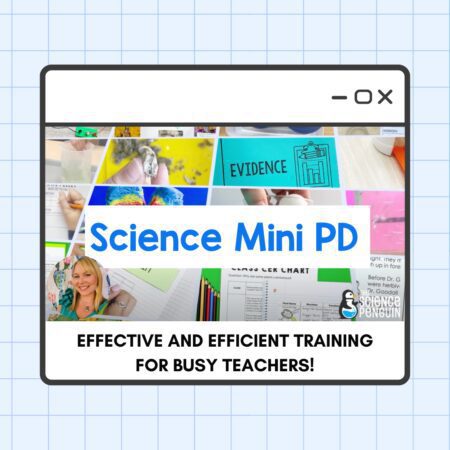
A kid in a candy store is fascinated by all the choices.
It’s been nearly three years since I blogged about student choice in the classroom. I’ve had many more “teacher experiences” with strong-willed tweens since then, so I would like to revisit student choice.
Why is student choice important?
As humans, we need some power and we need some freedom. Battles and boredom are often a result of students not feeling that they have power and freedom.
Stop battles before they begin by providing options. Don’t be afraid to give up some of your control. I realized that I had less control when I tried to dictate every last detail to students. Give and take, y’all.
The freedom in a classroom must be structured to help students maintain focus, but we can still give our students opportunities for power and freedom. Your expectations must be taught and clear to students.
When you tell students they have different options to complete a project, you shift the focus away from “Am I going to do this project?” to “How am I going to do this project?”
Students will become more engaged in their learning when they can make a choice that interests them most. When students enjoy what they’re doing, they are set up to learn more.
What do I do when a student abuses their freedom? I explain that they took advantage of the opportunity to make their own choice, so I would be making the choice for them today. Then, we start fresh the next time.
Do I make everything a choice? Absolutely not. Some things are “my way or the highway”. However, with give and take, students respond better to what I insist on. Like cleaning.
9 Simple Ways to Provide Choice in the Classroom
These 9 methods are my favorite, tried and true strategies when it comes to student choice.
1. Work wherever you like as long as you are on task.
After teaching expectations and practicing, allow students to choose where they work sometimes. For silent reading time, I would draw sticks with their names every 2 weeks to determine the order in which they would choose their reading spot. They would keep that same place for the 2 weeks so there wasn’t a fight every day over who got the comfy chair or where they were positioned on the carpet.
2. Complete odds or evens.
For math practice, you can have students choose which half they would like to do. They will feel the relief in having their workload cut in half, when that was the number of problems you intended for them to do. This one may be more of a sneaky teacher illusion of choice, but sometimes that’s the way it is.
3. Choose your partner.
I like to allow students to choose their partners sometimes, especially for a longer assignment or project. I make sure we quickly discuss making good choices and that students are responsible for your work no matter who their partner is.
4. Complete these 3 tasks, but do them in any order you choose.
If I need students to do a few different things, I make a list on the board and tell them to complete those items in any order. As adults, we do this all the time. The kids like this much better than being provided with a particular order.
5. You have 6 workstations to visit, but you may go to them in any order you choose.
I adore workstations. With procedures in place, I allow students to go to any open station if it isn’t already full.
6. This project has 3 output options.
If students are working on a project, I like to provide a few different options for their final output. While some students like a more artistic activity, others may want to write about the topic or create something on the computer or iPad. Sometimes students will come up with ideas that are even better than what I presented. I always say yes when feasible.
7. Make a tic tac toe by choosing 3 options on this Tic Tac Toe choice board.
Choice Boards allow students to complete 3 small projects out of 9 available options. With this activity, students can practice choice boards as you get to know them when school starts. Learn about digital choice menus.
8. Answer the questions on these task cards during a scavenger hunt.
When I need students to do practice questions, I like to use task cards. I tape them up around the room and students can complete them however they choose. They might go in order. They might zigzag. They do all kinds of crazy stuff, but again this is another opportunity to complete the same assignment in a different way.
9. If you finish your assignment early, here are your choices.
Your early finisher options can be as simple or complex as you want. There are many options ready to go on TpT or you can create your own. With a routine in place, there will be no question of what students can do when assignments are complete.
Things to Remember
- If you’re just getting started, think of a 2-3 ways that you can provide students with choice. There’s no reason to start with all of them!
- For any choice you provide, explicitly teach your expectations. Don’t let things get crazy.
- Think about how you work best. What choices would you want to have?
- A student who is engaged is a student who is learning.
What did I miss? How do you provide choices to your students?
Digital Choice Menus
Read how you can incorporate student choice with digital choice menus in Google Slides. READ NOW >
Sign up for the Free Resource Library
This is an exclusive library of 40+ science printables, labs, activities, and games for grades 3-6. Sign up and check your email for immediate access.






5 thoughts on “9 Simple Ways to Provide Choice in Your Classroom”
I have always found that randomly assigning students to teams, having them draw up an agreement among themselves outlining how they’ll proceed, and then have them tell me periodically how things are going!!!
I love the idea of having them determine the agreement!
Thank you, Ariane! I was doing some research on this and your post has given me plenty of food for thought!
I am not a huge fan of choices in the middle levels. However, I do allow students when creating a digital learning portfolio to CHOOSE what they want to showcase each week in their blogs.
Yes, This is so true.
Students really need freedom and everyone should ask their choices so that they feel free by telling their views, thoughts, likes dislikes. Freedom plays an important role in students success.